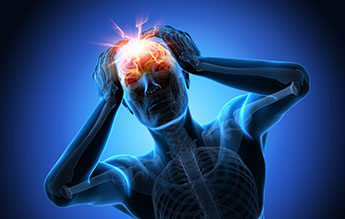Introduction and Definintion
We are learning more about concussion in professional sport, both through increased media attention and through education initiatives. We are also becoming more aware of the potential for concussion in any type of activity and of the importance of concussion prevention, recognition, and management. However, there is an ongoing need to make concussion awareness and education consistent. It is important that all education and sport stakeholders are educated about what concussion is, what to do if concussion is suspected, and what they can do to aid with the recovery process.
At some point in their career, educators will likely face a situation where a student is affected by a concussion. A significant number of children and youth are injured during participation in sport and other physical activity and as a result of assaults, collisions, falls, schoolyard accidents, and so on. Concussions can occur any time someone is moving during any type of activity, not only in a sporting environment.
Injury-prevention organization Parachute Canada defines a concussion as follows:
A concussion is a brain injury that cannot be seen on routine X-rays, CT scans or MRIs. It affects the way a person may think and remember things, and can cause a variety of symptoms. Any blow to the head, face or neck, or a blow to the body that jars your head, could cause a concussion. (Parachute, Concussion)

Any sudden impact or rotational acceleration of the skull can cause the brain (which is not a fixed structure) to move rapidly or jiggle, potentially causing injury and biochemical changes in the brain.
Although we generally hear only about serious cases of concussion that take a long time to resolve, 80 to 90 percent typically resolve within two to three weeks. Effective management of concussion can affect recovery. Someone with a concussion requires appropriate assessment, rest, and care before gradually resuming physical activity or returning to learn, play, work, use digital devices, and so on. We may not be used to thinking about the need to rest the brain after an injury, but it is essential, just as it is for other types of bodily injuries. When you sprain an ankle, for example, you rest it for a while, have it looked at by a health care professional, and then slowly return to activity. This all applies to concussion.
A concussion is an invisible brain injury with physical and cognitive symptoms. It is considered both a medical and an educational issue because problems associated with it can negatively affect a student’s functioning and performance in all learning domains. In some cases, a concussion can affect multiple aspects of a student’s ability to participate, learn, and perform well in school. After sustaining a concussion, students need to follow a graduated recovery process before returning to learning and playing. A premature return to school and engagement in academic learning activities that require thinking, memorization, and concentration or that involve visual or auditory stimulation can cause concussion symptoms to reappear or worsen.
The severity of concussion and the response to it vary for each individual and situation. Concussions are unpredictable and can be scary at first. Because everyone responds differently to concussion, recovery plans need to be individualized. Engaging the brain too much too early can cause symptoms to reappear or worsen. School professionals can help facilitate a student’s recovery and gradual return to learning and playing after a concussion. A collaborative approach by a team that includes school professionals, the student’s family, and health care professionals is required to manage the student’s recovery and to facilitate the appropriate supports or accommodations.
Parachute Canada’s Concussion Harmonization Project ensures best practice tools and resources are available for Canadians. Concussion protocols should be consistent across the country and based on the same core principals. A harmonized approach helps educators, coaches, parents, and school officials in their roles. It also contributes to safer student activity and helps students with concussions return to school, physical activity, and everyday activities.



